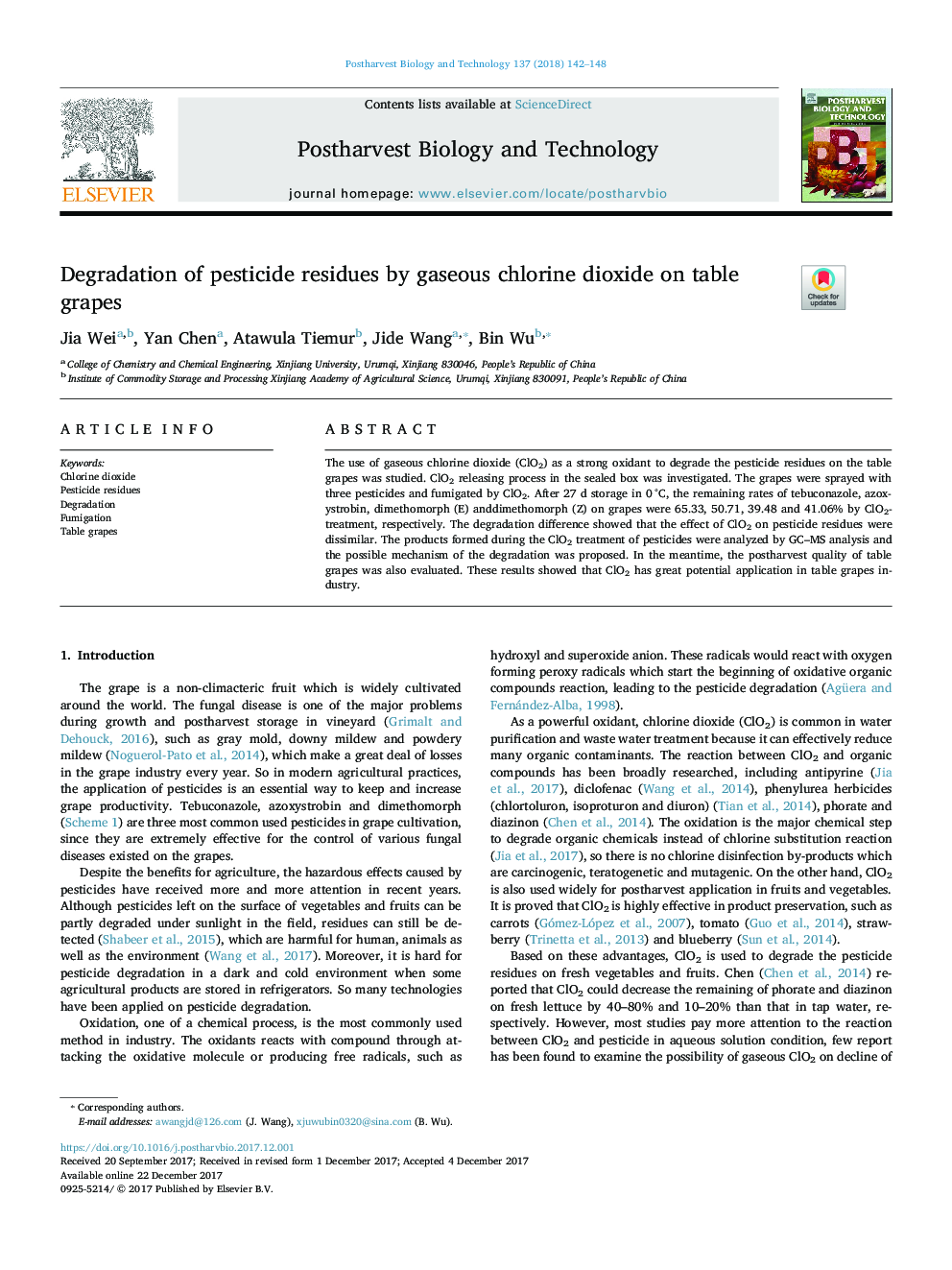| Article ID | Journal | Published Year | Pages | File Type |
|---|---|---|---|---|
| 8882035 | Postharvest Biology and Technology | 2018 | 7 Pages |
Abstract
The use of gaseous chlorine dioxide (ClO2) as a strong oxidant to degrade the pesticide residues on the table grapes was studied. ClO2 releasing process in the sealed box was investigated. The grapes were sprayed with three pesticides and fumigated by ClO2. After 27 d storage in 0 °C, the remaining rates of tebuconazole, azoxystrobin, dimethomorph (E) anddimethomorph (Z) on grapes were 65.33, 50.71, 39.48 and 41.06% by ClO2-treatment, respectively. The degradation difference showed that the effect of ClO2 on pesticide residues were dissimilar. The products formed during the ClO2 treatment of pesticides were analyzed by GC-MS analysis and the possible mechanism of the degradation was proposed. In the meantime, the postharvest quality of table grapes was also evaluated. These results showed that ClO2 has great potential application in table grapes industry.
Related Topics
Life Sciences
Agricultural and Biological Sciences
Agronomy and Crop Science
Authors
Jia Wei, Yan Chen, Atawula Tiemur, Jide Wang, Bin Wu,
